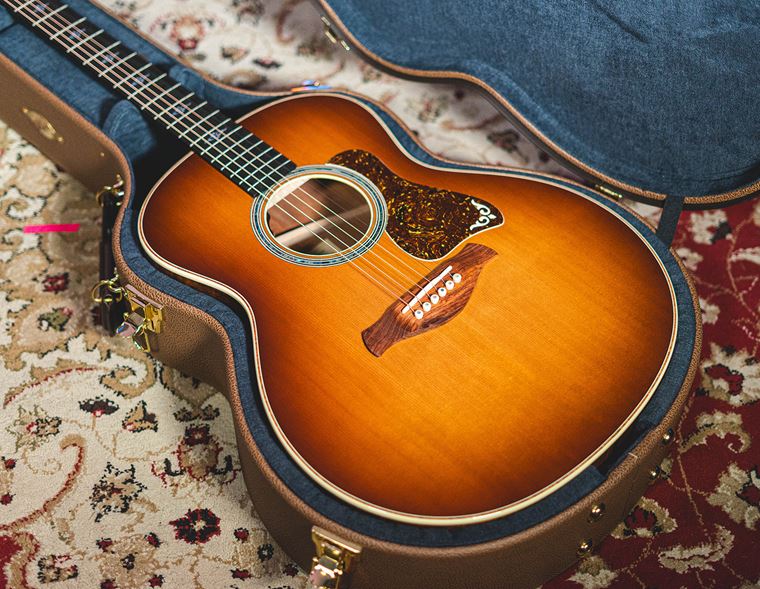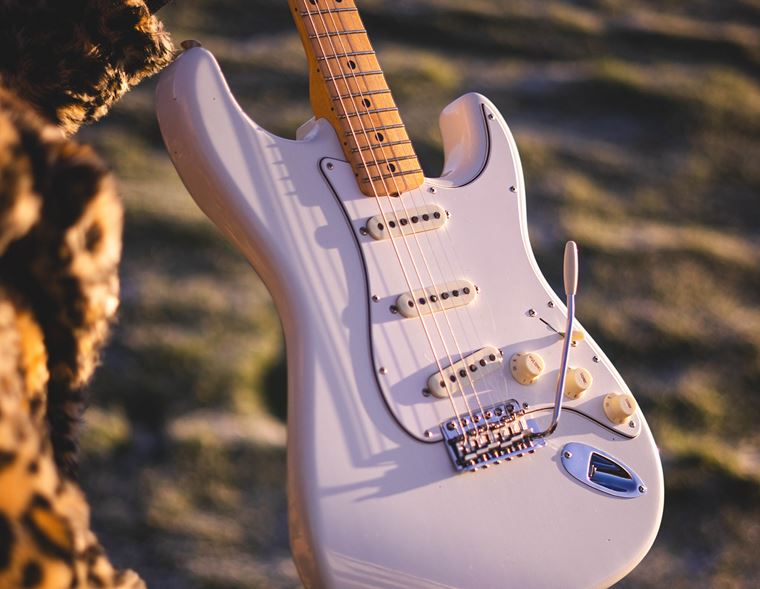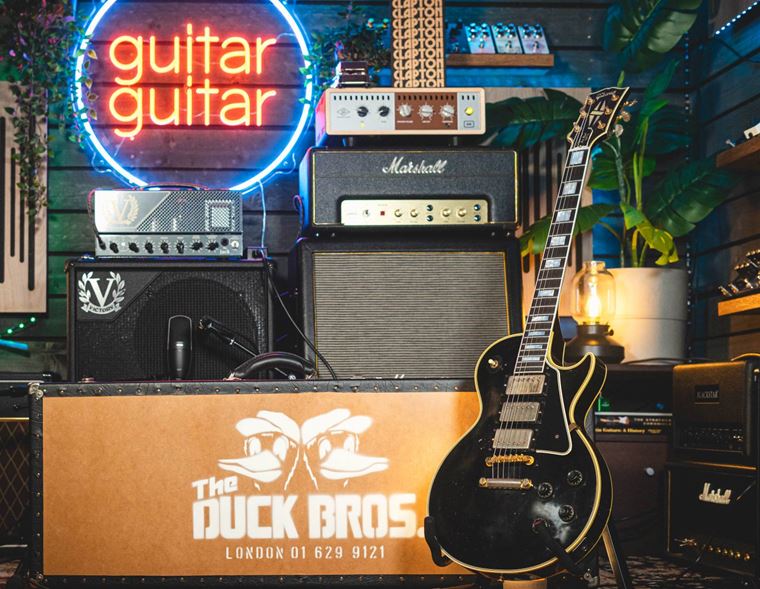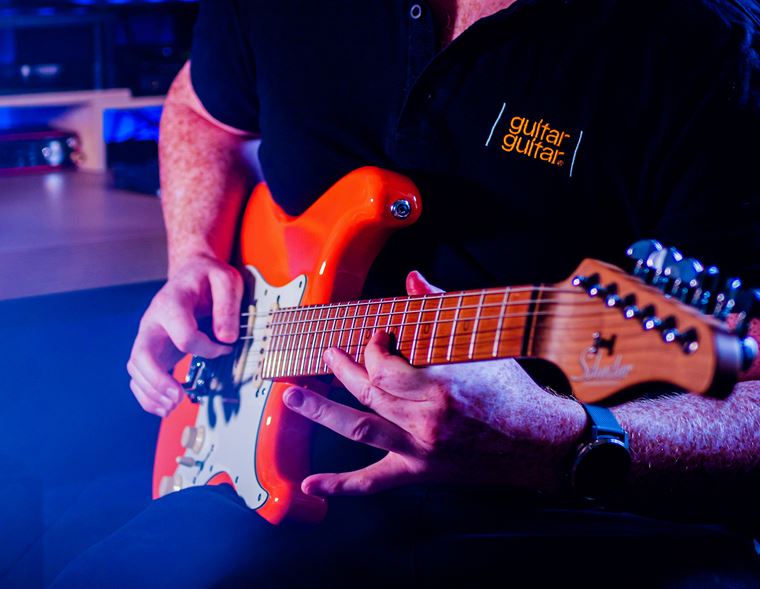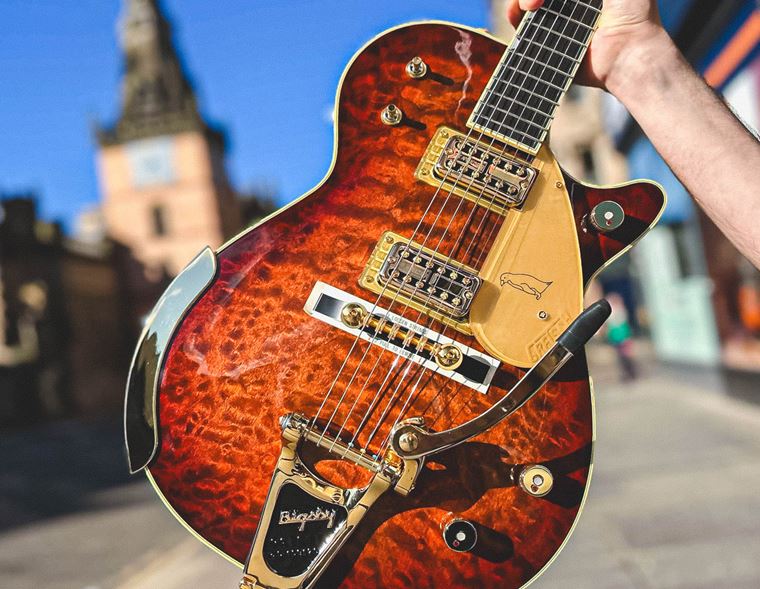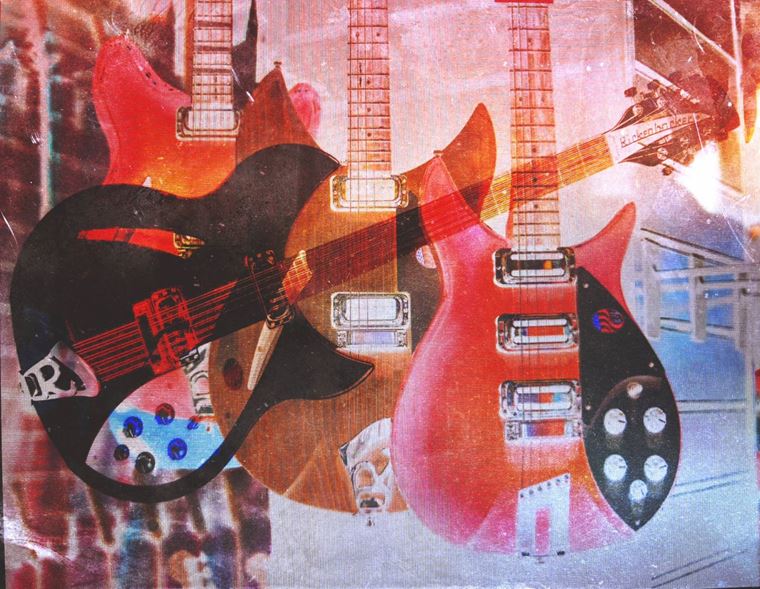PRS: The Ranges Explained
Published on 17 January 2024
Do you get a thrill when you see PRS guitars? Is it followed by a slight sense of confusion when you try to figure out the coding system for their models?
This blog is for you, then! Paul Reed Smith guitars are stunningly beautiful instruments that are also wonderfully playable and versatile. They are one of the few non-Golden age brands that have become classic in their own right. To PRS fans, nothing else will do, but to those who aren’t so well-versed on the brand, it can be difficult to tell what’s what.
This is the reason for today’s blog. I’ve owned PRS guitars, sold PRS guitars and even chatted to Paul Reed Smith himself, so you can trust me to guide you through their various model types! I know them well, and I’ll keep it all brief so that you get the info you need without a ton of waffle. Let’s do this!
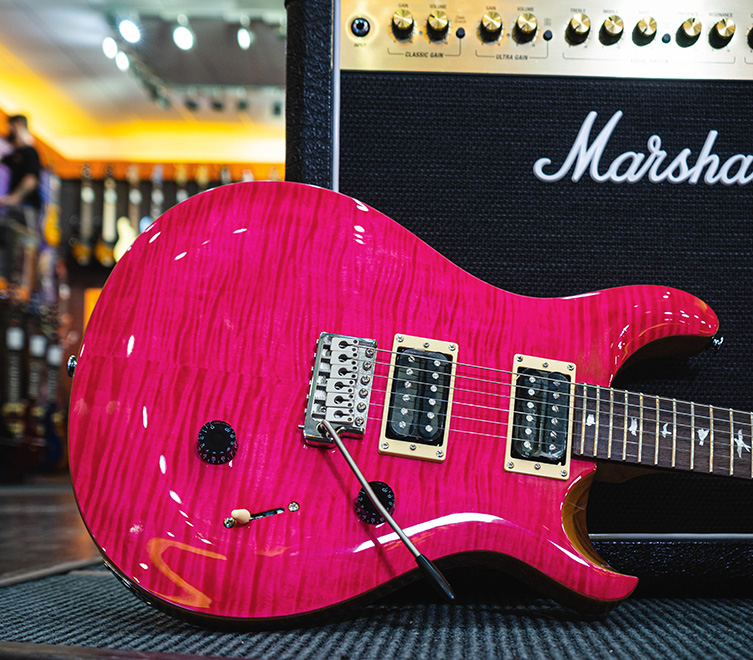
Contents
- PRS SE
- PRS S2
- PRS Core
- Bolt-On
- Artist Series
- Artist Pack
- 10 Tops
- Wood Library
- Private Stock
- PRS: A Modern Classic
PRS SE
Today, I’ll begin with the most affordable models and work up to the most expensive. PRS makes a guitar for (nearly) all budgets, despite their reputation as being an expensive brand. The PRS SE range (originally ‘Student Edition’, though that’s maybe not the case now) is designed by PRS and mostly built over in Cort’s Cor-Tek factories in Indonesia. Hollowbody models and acoustic guitars from the SE range are made in Cor-Tek’s Chinese facility.
The SE range is built to be as affordable as possible without having to cut major corners in either parts or build quality. All of the main PRS designs are available in SE form, including the SE Custom 24, McCarty and even some signature models from the likes of Mark Tremonti and Carlos Santana.
SE models are based on the USA guitars, but are obviously made to a price point: hardware and timbers are made from less costly materials, the guitars are built and assembled in a quicker fashion and detailing is less refined.
Superficially, the SE models actually look pretty similar to their American-born siblings, though it would be deeply unfair to compare the two ranges in any depth. For players on a budget though, the SE range is a legitimate choice: they look stunning, feel great, play well and sound very good.
PRS S2
The PRS S2 range is a sort of middle ground between the Indonesian SE range and the USA-made Core range that we’ll see in a second. PRS S2 guitars are actually also made in America: the ‘S2’ stands for ‘Stevensville 2’, since Stevensville, Maryland is the location of the main PRS facility. The ‘2’ refers to a second line of production, so whilst these guitars are built in the same premises as the Core guitars, they are created in more of an assembly-line situation.
The guitars themselves have simpler builds to allow them to be put together faster (and therefore at less cost), so you see S2 guitar designs using more pickguards and simpler body contouring, since these methods can really speed up the build. You’ll see simpler finishes, less figured tops and necks that are made with several pieces of mahogany, compared to single pieces for Core guitars.
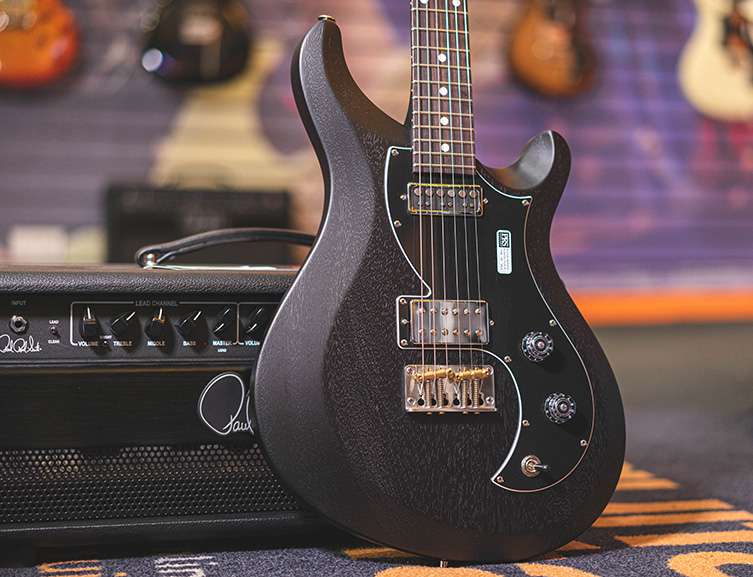
The pickups and hardware are designed in the US, made overseas and shipped back to the US. You’ll find familiar PRS models such as the Custom 24 and the Singlecut, but it’s worth pointing out that there are differences to the S2 takes on these guitars, with the differences I mentioned above coming into play. There are also a few very cool original designs too, though: the Vela is a great example of a new concept in PRS guitars that only appears in the S2 range.
It’s worth remembering, though, that the S2 series are still USA-made PRS guitars, made in the same Maryland factory as the most expensive models. Luxury and decoration are lesser priorities, but the fundamentals of build, feel and playability are there!
PRS Core
PRS Core guitars are the most famous examples of the brand, and can be seen as the ‘defining PRS guitars’, generally speaking. Core guitars include the Custom 24 - the original PRS model and still by far the most popular - and also the Custom 22, McCarty and Hollowbody models.
There are also some guitars that fall under the ‘specialty’ subbrand here, such as the Modern Eagle (Narrowfield pickups and extra switching) and Paul’s Guitar, which adheres to the main man’s own spec preferences.
You’ll also find variations of the Core models, such as Custom 24 guitars with Floyd Rose tremolos and some with piezo pickups for quasi-acoustic tones. The PRS Core is where you’ll see the violin-style carved tops, the stunning figured maple, the famously ‘clear’ guitar sound and a level of build that is quite exceptional. A standard Core line PRS Custom 24 is pretty much the same level of quality as most other companies’ best custom shop efforts. To get an idea of what PRS is all about, start here with the Core range.
Bolt-On
PRS guitars traditionally used set-neck methods for all of their guitars for years until players asked for a bolt-on variety. This idea spawned the PRS CE (Classic Electric), which resembles a Custom 22/24 guitar in most every way, apart from using a bolted-on neck. This changes the feel a tiny bit (I suppose that’s actually pretty subjective) but the bolt-on join does offer a slightly ‘snappier’, more percussive sound than a typical Custom 24.
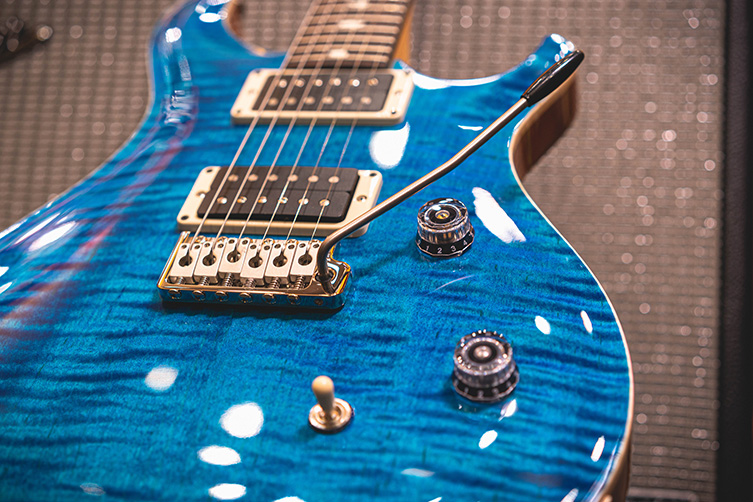
In more recent years, PRS have introduced more bolt-on guitars. Most notable perhaps is the Silver Sky, a distinctly Stratocaster-like guitar made to megastar John Mayer’s exacting specs. It has proven to be an enormous success, and so Alter Bridge’s Myles Kennedy has followed suit with a signature PRS that is clearly influenced by the Fender Telecaster.
Both the Silver Sky and the Myles Kennedy (also available as a non-signature NF53 model) are somewhat removed from what we’d typically associate with PRS, at least in terms of their design style, but in terms of build quality and feel, they are PRS through and through.
Artist Series
The PRS Artist series refers to any Artist signature guitar. The Artist series spans both Core and SE models, and features guitars from artists such as Carlos Santana (an early champion of the brand), Mark Tremonti, John Mayer, Mark Lettieri, Orianthi, Dave Grissom and of course Paul Reed Smith himself!
Given the individual nature of these models, there’s no particular theme tying them together in terms of specification. The styles can vary quite dramatically (even Santana’s guitar shape is different from the usual PRS silhouette), but once again, they are tied together by the brand’s high build quality and attention to detail.
Artist Pack
Not a range in itself, a PRS Artist Pack is actually an upgrade to the Core line instruments that increases the decorative visual beauty of the guitar.
Artist pack guitars have specially selected wood (for top, back and neck), ‘Artist Grade’ ebony fingerboards, and an ebony veneer on the front of the headstock. The hardware is distinctively two-tone gold and chrome, and you also get an Artist Pack hard case, which is distinct from their standard cases.
Basically, if you want an even fancier PRS, the Artist Pack guitars will be what you want to check out.

10 Tops
10 Tops are another upgrade to Core line PRS models. Put simply, 10 Tops are the most flamboyantly figured maple tops available. PRS rate all figured maple according to their own rankings (Artist Grade tops are more figured than Core tops, etc) and 10 Tops are the top of the pile. According to PRS themselves, in order for a slice of maple to be a 10 Top, it ‘must have a clearly defined figure across its entire top with no dead spots’.
I think it’s fair to say that most PRS guitars are good looking, but when you see a 10 Top, it’s quite a stunning thing to behold.

Wood Library
People get confused by the subject of the Wood Library and PRS Wood Library guitars. Let me clear this one up for you. The Wood Library is a room in the Stevensville factory that houses a huge selection of different timbers. These timbers range from standard mahogany and maple to extremely fancy and exotic species, and rank from ‘normal’ (as it were) to Artist Grade, 10 Top and Private Stock. It’s all here, in all of the varying levels of rarity and cost that you’d expect.
Wood Library guitars are not automatically upgraded instruments from the Core line. The idea is that dealers select the woods they want to use for a guitar order - and this is where some very cool and unusual wood combinations can be chosen - and these are then used to build a PRS guitar that can be any number of models from Core to Private Stock. The woods are all different prices and this is reflected in the final cost of the guitar, but the point is that these guitars will not be available normally and so are more exclusive and unusual. This will no doubt make them more valuable too, not to mention collectable!
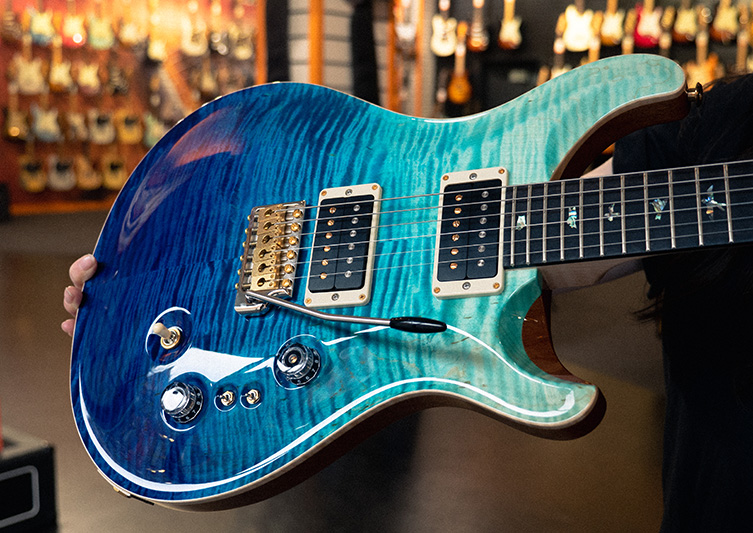
Private Stock
PRS were one of the original ‘boutique brands’, when every guitar was effectively a custom shop instrument. Therefore, their own ‘custom shop’ as it were, is called the Private Stock. PRS Private Stock guitars are where customisation comes into play: wood choices, neck dimensions, finishes, pickups, hardware and more can all be chosen by the customer. Private Stock guitars are considered the very top of the PRS tree, as Paul Reed Smith himself concours:
“The goal of Private Stock is not only to create the most beautiful and best-playing guitar money can buy, but the best sounding. If you decide on a Private Stock guitar, we will give everything we have to make it the best instrument you’ve ever experienced.”
Private Stock guitars basically accumulate all of the upgrades I’ve explained already: 10 tops, choices from the Wood Library, Artist Pack upgrades, and so on. If they offer it at all, it’s available when you choose to go for a Private Stock guitar. As Private Stock dealers, we can help you through this entire process, and we’d humbly say that no other retailer in the UK has the same level of experience with PRS guitars, so take advantage of our experience!
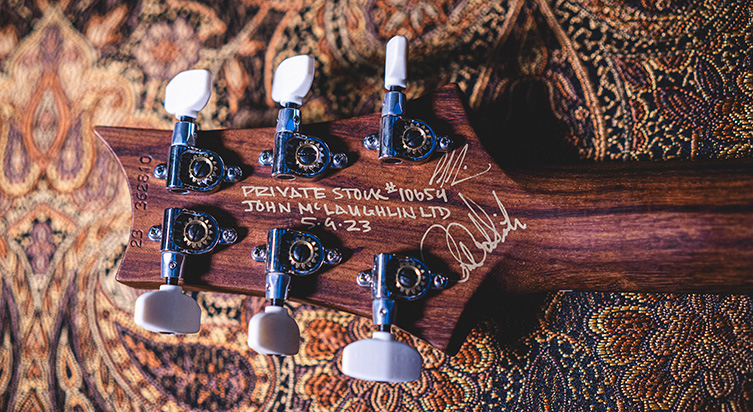
PRS: A Modern Classic
Those, then, are the main divisions of PRS guitars. I hope that has demystified the terms a little for you! The main takeaway is that you can have a PRS in a relatively affordable form, and you can have a PRS that is as high-end as guitars can be. Significantly, both ends of the spectrum display inspired design and great build quality, though it’s obviously pointless to compare the two!

Players who buy a PRS SE guitar will enjoy plenty of the design benefits and versatility that mark PRS as a classic brand. Players who are able to invest in a Private Stock instrument will be enjoying some of the best and most beautiful guitar building available anywhere on the planet. For those in between, there’s all kinds of joy just waiting for you! Click below to see our huge current stock of PRS guitars, and start planning your next dream purchase!




